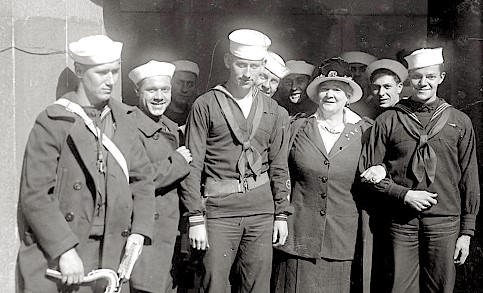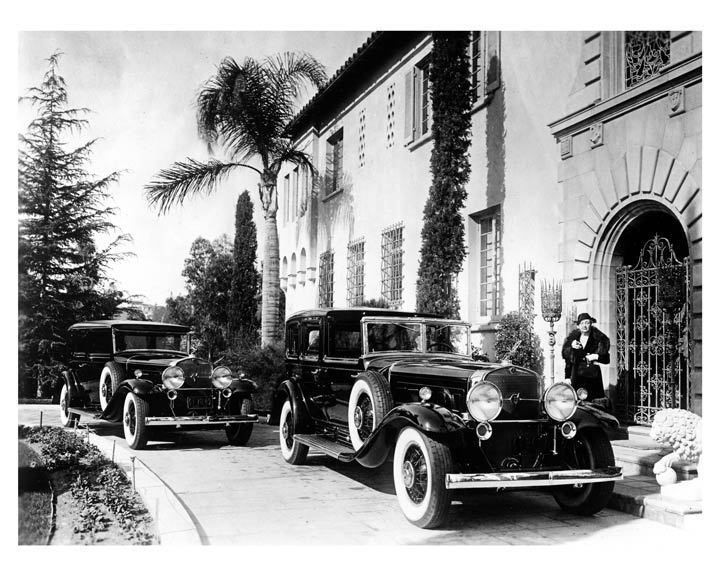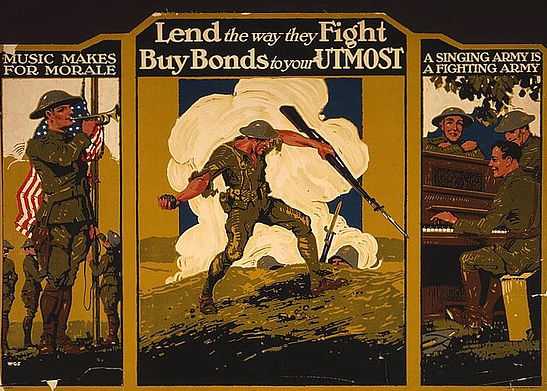Choral Review
Camerata California
Armistice 100th Anniversary Concert
This was an extraordinary event — an “event” because, though it included an excellent choral concert, it was much more: a commemoration of Armistice Day and an important lesson in US political and cultural history. Let’s start with Armistice Day or Veterans Day, as we call it here in the US. For most people, this Sunday, November 11, 2018, passed with hardly a thought. People were looking forward to the next day, which marked the official, Monday-after celebration of Veterans Day — with sporadic events around the community, sponsored mostly by veterans organizations.
But this particular day had its own significance because it marked exactly 100 years since the end of World War I. Camerata California Artistic Director Pete Nowlen had an unusual idea for how to commemorate that event. It would culminate in a performance of Ralph Vaughan Williams’ Dona Nobis Pacem. But our Armistice Day commemoration began with a presentation called “Music to Unite a Nation,” a profile of the cultural history of the years before and after World War I — from the perspective of the life of opera singer, Ernestine Schumann-Heink.
Our Sunday afternoon at Sacramento's First United Methodist Church began with Nowlen’s asking those who had served in the armed forces to rise and be recognized. (Uniformed active-duty and veterans, as well and youths 17 and under were admitted to this event without charge. I might add here that as we entered the church, we saw signage to the effect that $5 from each ticket would be donated to the victims of the horrific Camp Fire, still raging on this day.)
After the acknowledgment of veterans, Nowlen invited the descendants of Ernestine Schumann-Heink to stand. A row in the church had been reserved for them, and several stood, including Mary Wesley, Board Chair and General Director of Camerata California. I’ll confess that before this afternoon I had never heard of Schumann-Heink. I should have — we all should have — because besides being the most successful opera singer of her time, she was known and loved throughout Europe and America, and was a one-woman USO in World War I.
 |
 |
| Ernestine Schumann-Heink “Mother of the American Army” |
Ernestine Schumann-Heink “Wealthiest Opera Singer in the World” |
Nowlen had carried out major research into the life of Schumann-Heink, and over the space of an hour he led us through a multimedia presentation that he had personally created, including not only photos and posters, but contemporary video and audio clips. Schumann-Heink was born in Bohemia in 1861, and the story of her life began with her struggling to support several small children as a second-tier opera singer — so desperate that she contemplated suicide. She eventually got a break that opened the way for her to get a major role that led to her increasing fame in Europe, eventually making a triumphant debut at New York’s Metropolitan Opera in 1899. As Nowlen explained, within 15 years she was a household name in the U.S., eventually becoming the wealthiest opera singer in the world, including Enrico Caruso, with whom she performed frequently.

These details of Schumann-Heink’s early life were beautifully illustrated with audio clips from a 1949 radio dramatization of her life (plus other recordings) and selections from her writings. These latter were read by UC Davis professor and opera singer, Zoila Muñoz, who was dressed in one of Schumann-Heink’s gowns. The “big break” in Schumann-Heink’s career was playing the title role in the opera Carmen, which Muñoz commemorated by singing the “Habanera” (to the delight of this afternoon’s audience).
In the run-up to WWI and during the war, Schumann-Heink took more than a year off from her career to dedicate herself to the war effort, performing for soldiers and for public fundraisers. At the same time she opened her homes to soldiers, one of the many gestures which led to her being known at the “Mother of the American Army.” Significantly, she had 5 sons who served in WWI — 4 on the American side, and one on the German.
Nowlen shared post-war events from Schumann-Heink’s life, as well, including one of local interest. When Sacramento’s Memorial Auditorium was dedicated in 1930, local mothers protested the presence of “foreign-blooded” children on the stage (Chinese, Japanese, Negro, Portuguese and Italian) at a recital marking that facility's dedication. Schumann-Heink rebuked them publicly, singing a lullaby for the children, then leading them in singing the “Star-Spangled Banner.”
Throughout this hour-long presentation, Nowlen had the audience sing (helped by the Camerata Chorus in the difficult parts) songs that illustrated the spirit of the times: “My Country ’Tis of Thee,” “America the Beautiful,” “Give My Regards to Broadway,” and “It’s a Long Way to Tiperrary.”
The presentation of Ernestine Schumann-Heink’s life closed with presenting part of an article she wrote for Cosmopolitan magazine on Armistice Day 1935 in which she warned of the horrors of war in light of the events that were leading to WWII.
After a 10-minute intermission, the audience was given another strong anti-war statement in the form of Vaughan Williams’ Dona Nobis Pacem, which, noted Nowlen, had been composed in 1936. The text of this profoundly anti-war work is drawn from a small section of the Latin mass, 3 poems by Walt Whitman, a line from a speech by John Bright, and a number of Biblical citations — most from the Old Testament. The chorus consisted of 18 singers (including soprano soloist Ava DeLara). The guest soloist was Dr. Joseph Wiggett, Professor of Voice at California State University, Stanislaus. And their work was complemented by a 22-piece orchestra (including organ).
(Click here to open the program in a new window.)
The music began (and ended) with the beautiful pure singing of DeLara, essentially the angel watching over the terrible story of war embodied in this musical composition. Her solo was followed by the rest of the first movement of this piece, which encapsulated the anxiety preceding war, and building, especially through the efforts of the brass and timpani, to an intensity that was simply soul-shaking in the relatively small performance space of the church.
The first of Whitman’s 3 texts (Part II) was nothing short of war in music. I’ve heard this piece performed by a much larger chorus, and ordinarily one would consider it most suitable for a chorus of 60 or more voices. But Camerata California was clearly adequate to the challenge. They had the power necessary to balance the orchestra in the loudest sections, and in the softer sections, I was aware of their good blend, despite the strength of many excellent individual voices.
Guest baritone soloist Wiggett was highlighted in Section III, with the text of Whitman’s poem “Reconciliation.” For me, his voice was a pleasure to listen to, capable of great sensitivity and strength. And his delivery of the poignantly famous line “this soiled world” was profoundly moving.
Part IV of this piece, with the text of Whitman’s “Dirge for Two Veterans,” captures the tragedy of two generations dying in battle, and with Vaughan Williams’ brilliant score, conveys enormous regret over the human cost of war. Like the rest of Whitman’s poems in this piece, it presents powerful images, accompanied by powerful music — and in this performance — powerful singing.
Wiggett returned in Section 5, delivering with great drama the lines “The Angel of Death has been abroad throughout the land…” (from a speech by John Bright, against the imminent Crimean War). Wiggett filled the room during the loud passages, and his intensity during the soft passages was such as to demand the audience’s attention. The subsequent choral parts were full of chaotic energy. As I listened, it struck me that it was a privilege to perform this work (and hear it performed) on such a momentous occasion. After all of the musical settings of the turmoil and tragedy of war, the final line from Luke II, “Glory to God in the highest, and on earth peace, good-will toward men” was never given a more profoundly emotional setting, movingly delivered by the chorus. And all that was followed by the return of the angelic voice of Ava DeLara, with the final wish: “Dona nobis pacem.”
This was 40 minutes of passionate music, and the passion we feel for war and for peace — and for soldiers and veterans — needs expression in passionate music. It struck me that the singers (and players) had a duty to give their best in the presentation of the important message of this piece on this solemn occasion — and they acquitted themselves well. For my part, I have felt a great responsibility in just documenting the significant event that I witnessed.
After the standing applause for all the performers, director Nowlen asked us to remain on our feet for the playing of “Taps.” It was a recording from July 29, 1918, and along with the playing of the trumpet, we heard Ernestine Schumann-Heink sing the words. We stood in silence, taking to heart Nowlen’s request that we “think of those who have served in battle and those who are currently battling fires in our state.”
Reflecting on this 100th Anniversary commemoration of Armistice Day, I see it as a major expression of philanthropy. The costs in planning and carrying it out had to have been extensive, far more than the ticket revenue from the modest-sized audience could cover. So the whole event was essentially a gift, a gift of appreciation and remembrance: to veterans, to a major American historical figure, and to the Sacramento community. On behalf of all of them, I offer my thanks.
Note: Pete Nowlen offers to make his hour-long, multi-media presentation, “Music to Unite a Nation,” to other organizations.
Dick Frantzreb is past editor of the Sacramento Choral Calendar and co-founder and past President of the Sacramento Valley Choral Coalition. He currently edits the Placer Performance Calendar and the new Capital Region Performance Gallery. He has been loving live performances in the greater Sacramento area and writing about them since 2012.